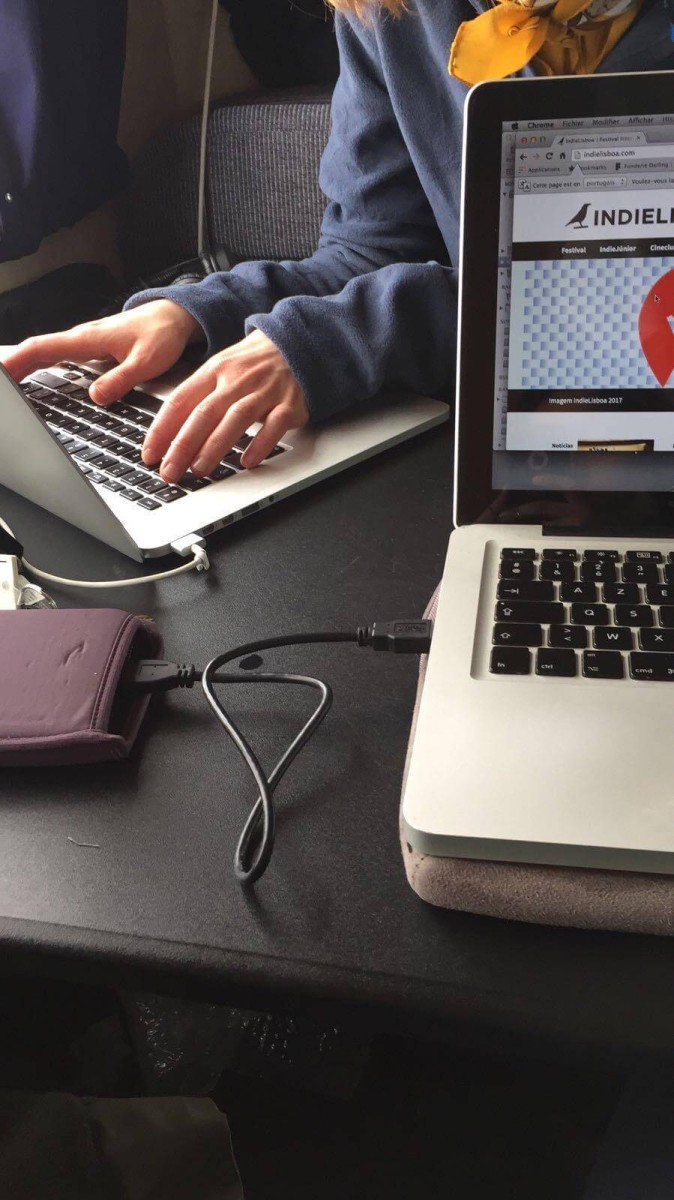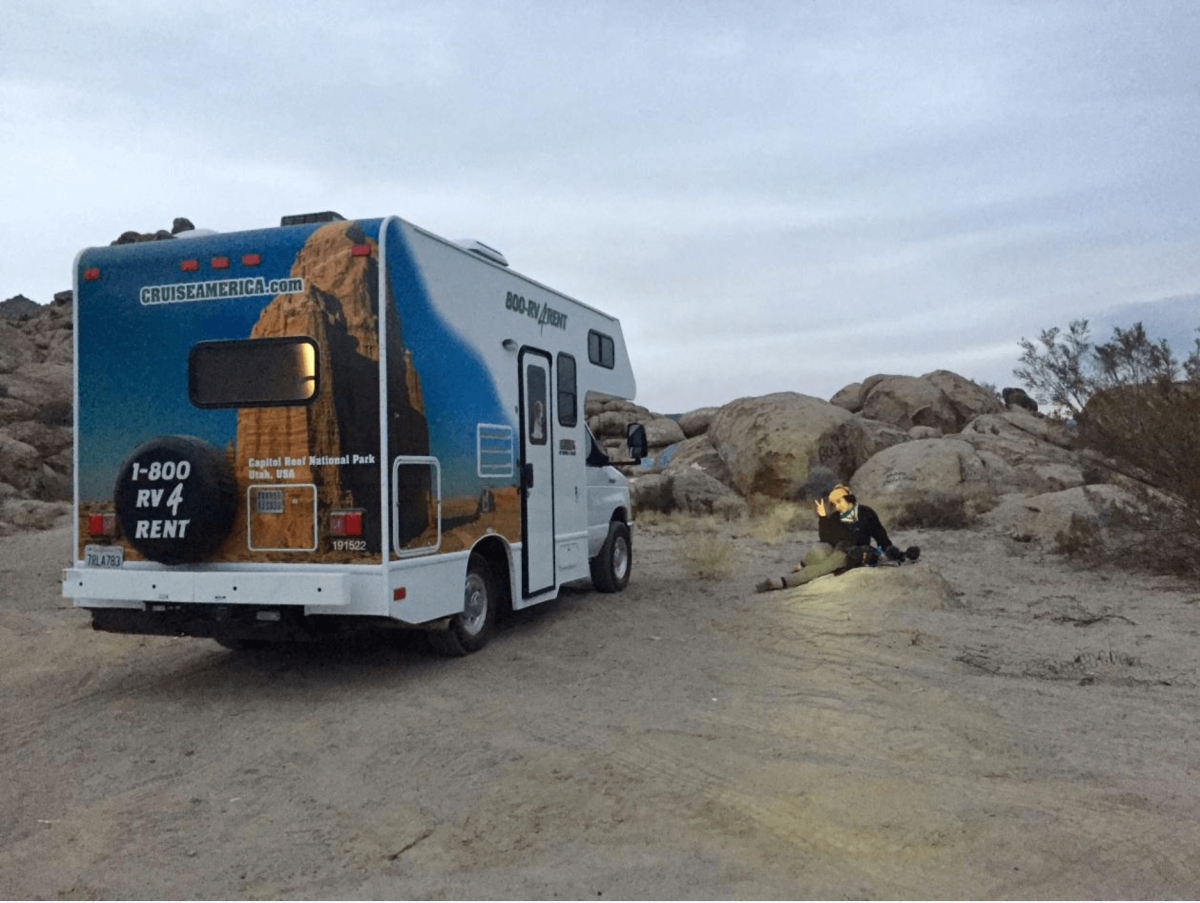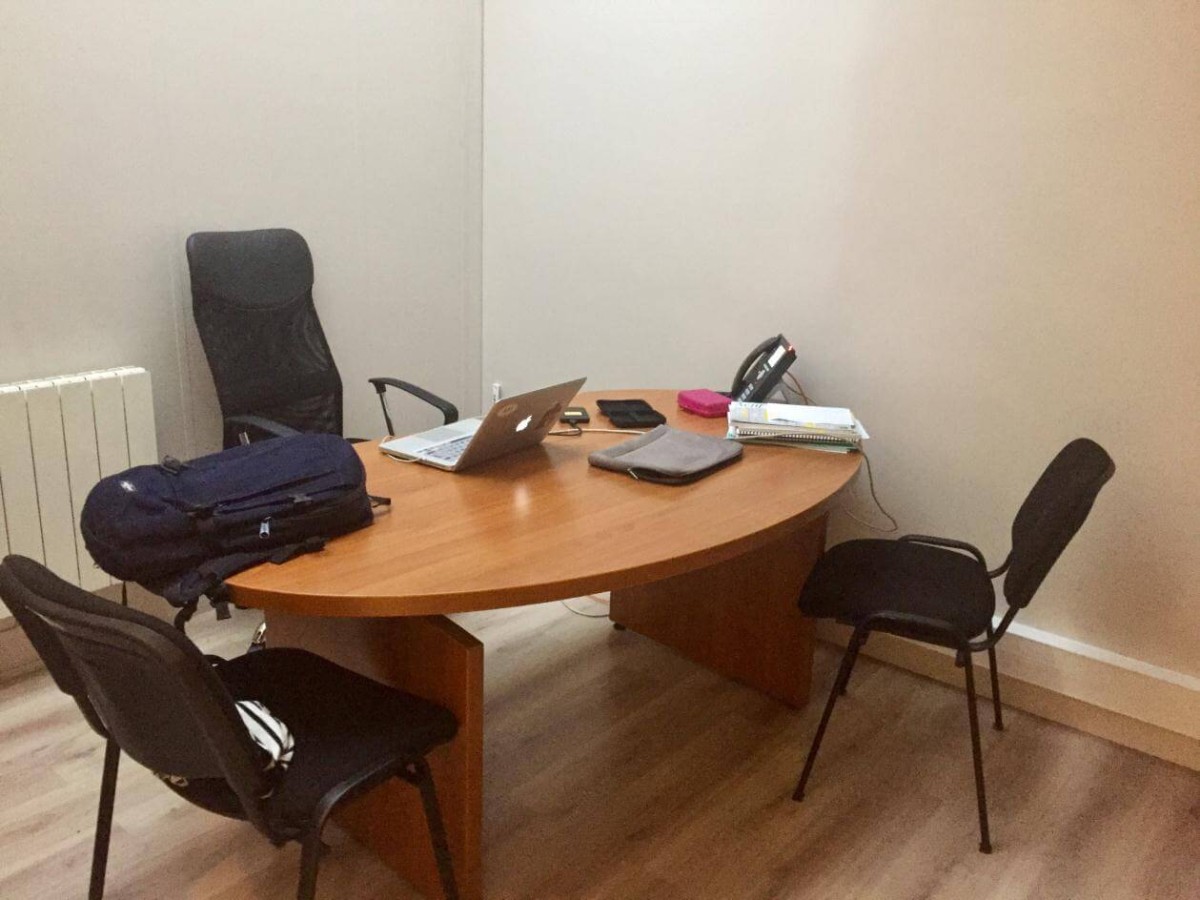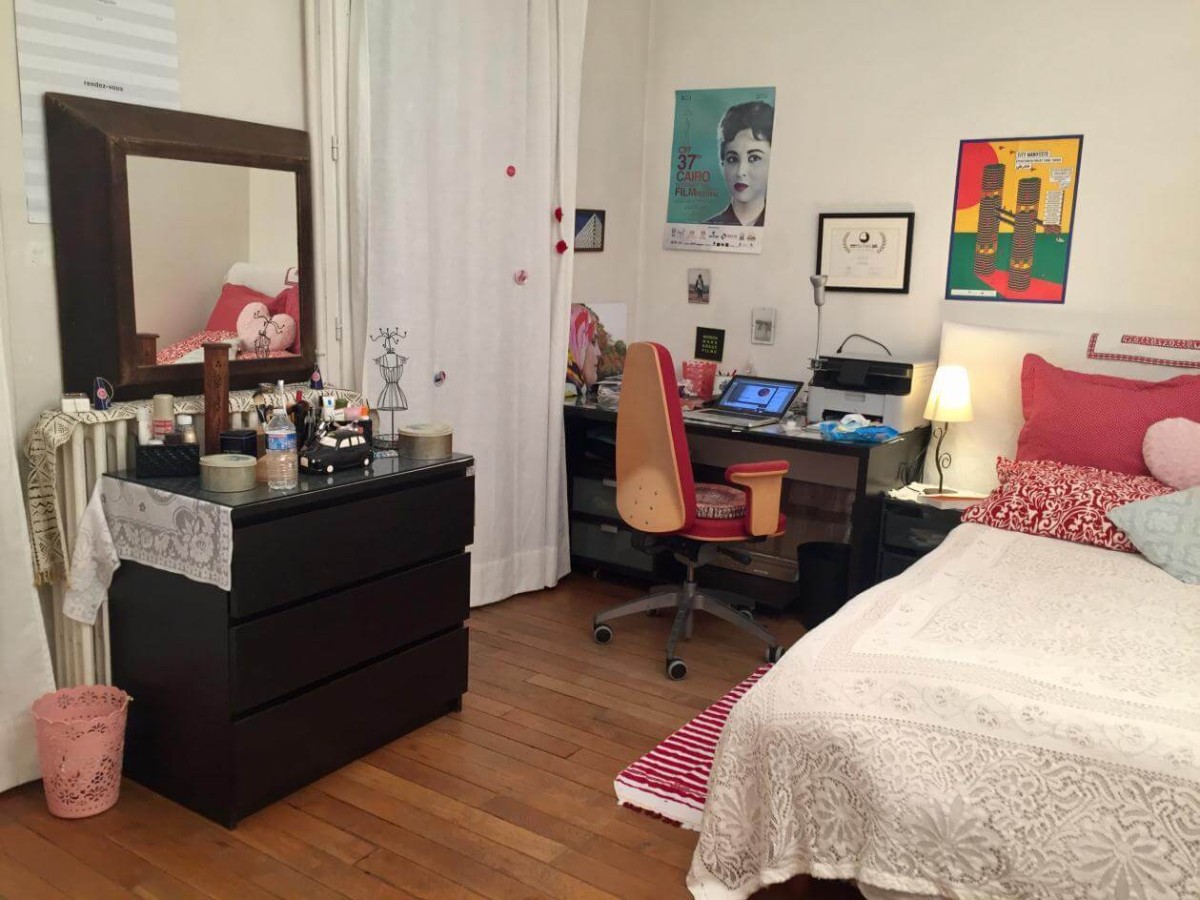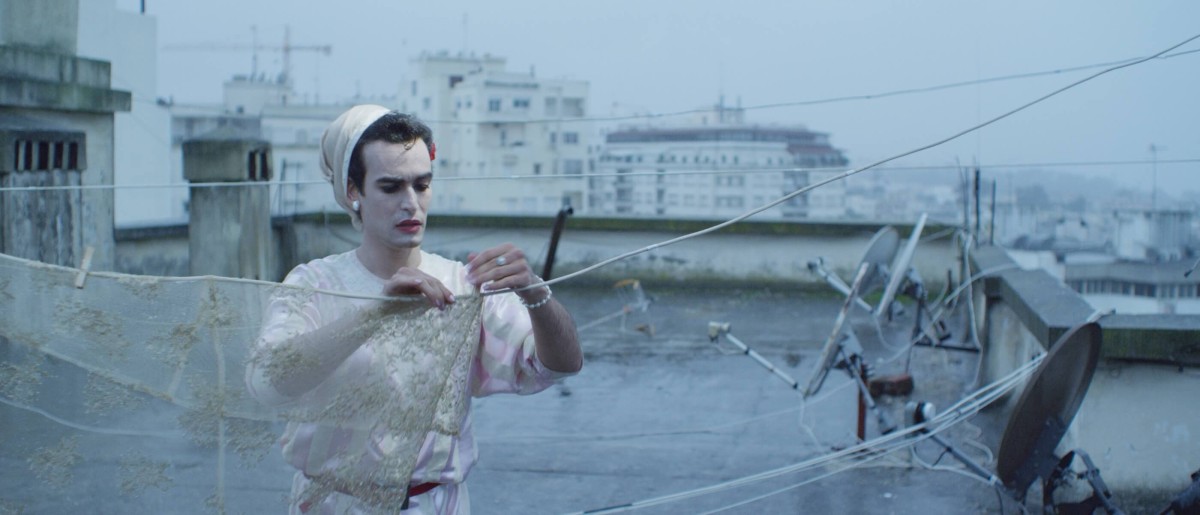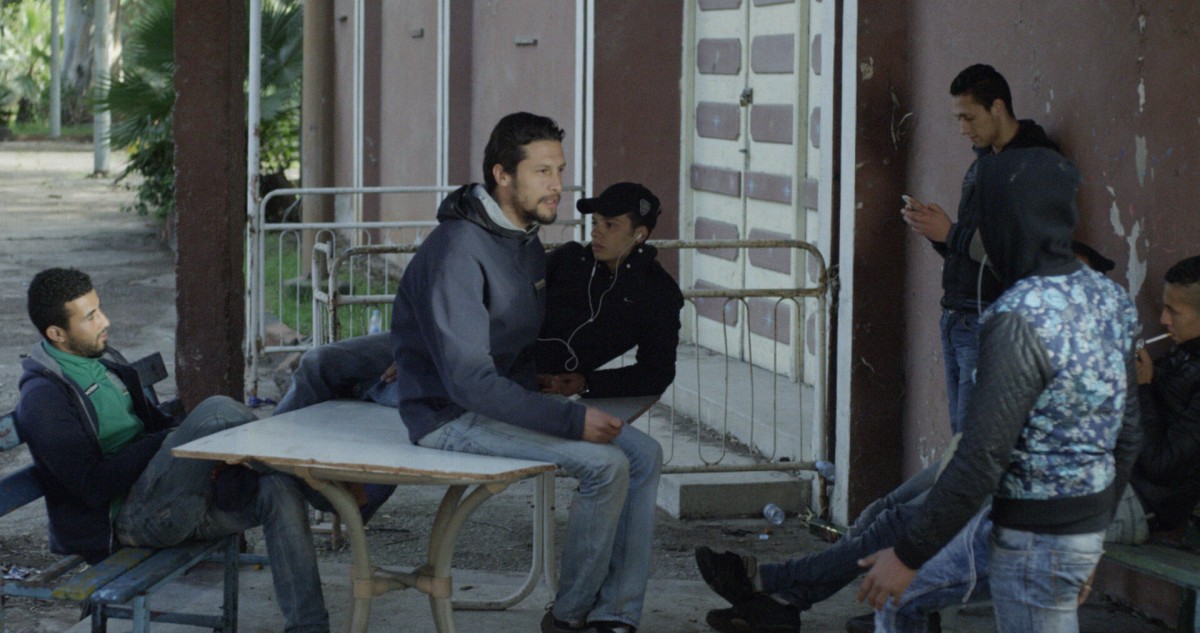Conversation with Randa Maroufi
Randa Maroufi, a studio in transit
From Amsterdam to Casablanca, by way of Angers, Randa Maroufi explores known geographies. However, in inserting herself in the cracks and developing unexpected stories, she ties together local histories and personal destinies. Directing lines distinguish themselves from her oeuvre, with notions of encounters, communities, but also displacement. What could be more natural for an artist who first studied at the Fine Arts school of Tétouan in Morocco, then in Angers, before perfecting her film practice at Fresnoy? She is currently a resident at the Casa Velazquez in Madrid. Her work has been shown at MoMA, the Marrakech Biennale and at Bamako Encounters. Most recently, in September 2017, she took part in Prospective Cinema at the Centre Pompidou. The film The Park was acquired in 2017 by the National Center for Visual Arts (CNAP). During her numerous travels, Randa Maroufi’s oeuvre doesn’t take shape in a particular studio but in the “necessary territories”: places that impose themselves in the artist’s life, such as an office lent to her by a friend, a residency’s living space, or a small space cleared out in her own room.
Loïc Le Gall : In the beginning of the year, you spent a month and a half in the United States to help an artist friend on a project. Did you take the time to work on your own? How was working in an RV?
Randa Maroufi : I had to set aside a month and a half to help a friend on her shoot in the Nevada desert. Despite limited access to the internet and a computer that only works when plugged in, I succeeded in finishing the editing of my last film “Stand-by Office” in these conditions and to send large files for exhibitions (so that they could make prints). I also was able to work on writing my next film and to prepare applications for funding.
It wasn’t easy for me to concentrate only on my projects but I took advantage of learning about sound techniques. So I consider this period as a sort of training.
LLG : An artist’s working time is more and more fragmented, even more so for artists who make films. A studio tends to disappear in favor of one provided by a residency, for example, or one shared with other artists. Besides, a good number prefer now to set themselves up in cafés, on their kitchen table, like a writer. Artistic practices have largely evolved; this isn’t a surprise to anyone. What’s your relationship to your “working space”?
RM : As soon as I have a good internet connection, my computer, my hard disks and electricity, I can work anywhere, even if I prefer my little office at my place in Clichy where I can work peacefully, isolated from the outside world.
LLG : How does the genesis of a film work? What are the things that click into place that bring you to work on a specific subject?
RM : A film is constructed progressively through encounters, or sometimes based on an image that I find on social media, a souvenir of everyday life or a fleeting event. As soon as I grasp this moment, I lay the idea on paper, then as a second step, I come back to it after having digested and imagined a way for treating the subject. For example, for The Great Safae, my family often spoke of a person who existed but whom I didn’t know.
LLG : This film is inspired by the life of this “Great Safae”, a trans man who worked for your family.
RM : Indeed. Sometimes in the street, people would say to me: “Look, there’s a Safae.” But I didn’t understand what it was, what that identity was. I then decided to record people around me without them knowing, and I asked them to talk to me about this character. I let this material sit and came back to it later. I tried to construct a fiction or something that brought together documentary and fiction. For The Park, another example, my starting point was images that had been shared on social media and that I collected. It’s my little collection of absurd images. I found myself with disparate images, impossible to bring to together, like images taken by customs agents, beer cans disguised as Pepsi, so they can be consumed in public spaces in Morocco—or people posing with guns—photographs both nonsensical and violent. I finally decided to work with these brutal images that became the structure of the film. For Stand-by office, it was an encounter. During a walk in Amsterdam, by chance, I noticed “we are here” was written on a wall. I thought it was an announcement for a party or something festive, I was intrigued. In front of the building, two men spoke in Arabic. I asked them what was going on here. They responded that they were part of a group of refugees, living in the empty buildings of the suburbs. They invited me to discover one of the spaces, abandoned offices from the 2000s, finally serving as living spaces. This contrast struck me. I looked to create with these people a fiction bringing together personal histories and the history of the place. Concerning my new project in Ceuta, I was inspired by a family history. My father was a border agent, and sometimes he brought back seized items that we would consume. When we went to Ceuta (a Spanish enclave on the Moroccan coast), there was a fear and tension that was particularly tangible on the border. I never thought about doing a project there until the moment I was invited in residency at Trankat (an artist residency in Tétouan in Morocco), directed by Bérénice Saliou. Tétouan and Ceuta are very close to each other, and it was thus the opportunity to develop this project. That close to the border, I could walk along and across it and observe.
LLG : You evoke the street, the border, the park. There’s always this interest in public space.
RM : Tied to an experience of slightly distanced observation, yes. Right now, I have a performance-action in mind. Not too long ago, I had a day job in Bondy. I took Line 2 on the metro every day, going through Barbès. I observed the boulevard de Rochechouart from above. In the neighborhood, there were only men, sitting and smoking, talking in the cafés. I’d like to go into the space at 4 in the morning, and based on scouting photos I will have taken, ask women to sit the same poses as the men. There’s the idea of observation, but also intimacy.
LLG : It’s above all a question of women in the public space, sometimes non-existent. Such a project seems resolutely feminist.
RM : Indeed, it’s a thread in my work, whether it’s via actions or films. I try to never focus on one subject or medium. As a result, I often have a main project and annex things that insert themselves. Last year for an Austrian radio station, I produced one of these “small actions” that could be qualified as feminist. My mother was drawn to the catalogue of the 60th Salon de Montrouge. She began to comment on what she observed there. I was interested in knowing how a work of art is perceived. I dramatized this line of questioning by confronting people close to me with Courbet’s Origin of the World, a 19th century painting that shows a vagina. I recorded their thoughts and commentary. I thus produced a portrait of a painting through its reactions. Some of them knew the painting, most didn’t.
LLG : This research leads to a question of the life of an artwork beyond its historical and social context. To see how it can evolve in time. This is tied to the research of artist Franck Leibovici who has passionately studied this subject for years. He studies with particular interest how an artwork exists through language.
RM : Here, this art icon isn’t analyzed in its own century, and what’s more, in a different culture. I asked myself how this image, that could be judged as disturbing, is interpreted in an intimate space. When I discovered this image, I questioned myself about the status of the work. That’s why I wanted to observe reactions that it provoked in people who didn’t necessarily have a deep knowledge of art history.
LLG : Here we touch on the documentary aspect of your work and the representation of testimony. But you develop all the same a fictional fabric. So, how do you accommodate the question of the fake, of illusion in relationship to the real and truth? At what moment can reality erase itself in favor of fiction?
RM : Often, we find both. The border is very porous. What I’m looking for is to play with this ambiguity of mise en scene. I want to leave a vast field of possibilities open to the viewer, open to interpretation. In The Great Safae, a soundtrack creates this interstice of possibilities. Often, actors replay fragments of reality, other times they are real testimonies. The interweaving between “reality” and “plausible” reality pushes this incertitude of the existence of the great Safae to the maximum. In The Park, I appropriate articles from Al Jazeera. However, I re-write the texts in my own way, just taking out some words. They become ambiguous or absurd. An actress read the material in the manner of a newscaster. I realize that the image is often fictive, and that the sound allows the film to be anchored in reality or allows us to question it.
LLG : You also seek to provoke doubt in the viewer in order for them to be more invested in the subject.
RM : Yes. I don’t want to deliver truth in a fiction, I try to propose possible interpretations. The frontier between documentary and fiction really feeds this kind of interpretation.
LLG : This makes me think of Walid Raad’s work, a Lebanese artist who developed an oeuvre that reconstructed the history of Lebanon, his mother country, notably by inserting probable stories into actual history. The collective memory of the Lebanese tends to erase itself because the population willingly forgets or not the civil war that ravaged the country. It is by individual testimonies that we can find this history again. He constructed archives in which the public could be very lost, navigating between truth and “fake news.”
RM : The status of the archive is complicated; it’s always possible to question them and to use them to construct a discourse opposite to what they are supposed to bear witness to.
LLG : Let’s return to something more prosaic, what is the production of your films like? We’ve spoken of their genesis, of their constructions but not production.
RM : First, I do scoutings. The ideal is to be able to work with people on site, or who know the place well. Sometimes friends will come with me and help reassure locals. People will often play the game. For The Park, I wanted to work with a specific park, but I imagined finding it empty. I had been told to be careful because disreputable people hung out there. Given that I am inspired by fears and dangers, I of course went to explore it. I met a man there who had worked in this park for many years. We spoke for a time, including by telephone. I spent a month with him and his friends, right in the middle of their every day life. I consider a reciprocal confidence to be necessary from the beginning. In the same way, for the project in Amsterdam with the refugees, I visited them every day, I showed them my work. They asked me a lot of questions about the status of my films, between fiction and documentary.
I leave a large part open to improvisation. People have the freedom to “play” in their way what they’ve understood of the project but also to keep what they want of the rushes.
LLG : There is a real involvement on the part of the “actors” putting together the film.
RM : If there’s a selection, it’s because there is a relationship of trust between us, notably concerning the use of the film (that it’s not for advertising, or a way to “make money.”) During rehearsals, I try to show shot images or reference elements in order to create this link, which is so important. My actors are very curious about the final result. The day we shoot, when I arrive with a team of 20 people equipped with professional material, they feel even more implicated.
LLG : You push yourself towards meeting people and you work with them in a very close way. It’s a real engagement and you’re also a volunteer in a charitable organization.
RM : I need to be surrounded, as much as for the content as for the concreteness. Alone, it would be impossible for me to produce my films. I reach out to people close to me, communicating my projects, ideas and desires. I always listen attentively to what people say to me. I learn, I discover references. I’m in a permanent need to be in exchange from the very beginning of a film, to its production, its editing. Sometimes I’m missing something, I sense it when I look at my rushes and they’re not very good. I always try to avoid clichés and stereotypes.
LLG : I know that you admire Harun Farocki’s and Abbas Kiarostami’s oeuvres, do you have other figures who have deeply inspired your work?
RM : Before the production of my films, when I’m soliciting the ten or so people who know my productions and have been following my work, they give me grounding points. I don’t necessarily look for a filiation and I like to discover gradually in my projects works that I didn’t know about. For the project in Ceuta, in which I accompanied smugglers to the Moroccan border, I learned that Yto Barrada also filmed smugglers in her studio. It was chance, and I also wanted to see the film and approach the subject differently. But, I don’t only look to video and film references; sometimes they come from painting, performance, or sculpture.
LLG : Yes, you work with other medium, including performance and photography.
RM : In the end, film is the only format that allows me to bring together all mediums.
